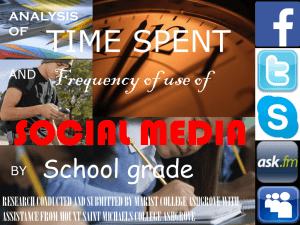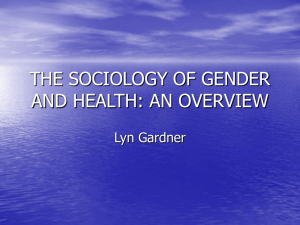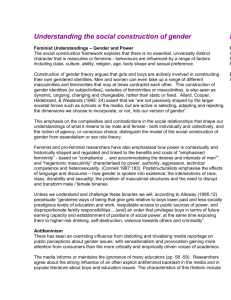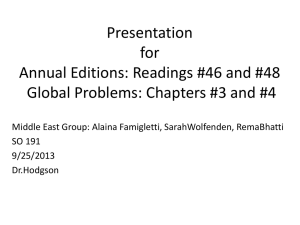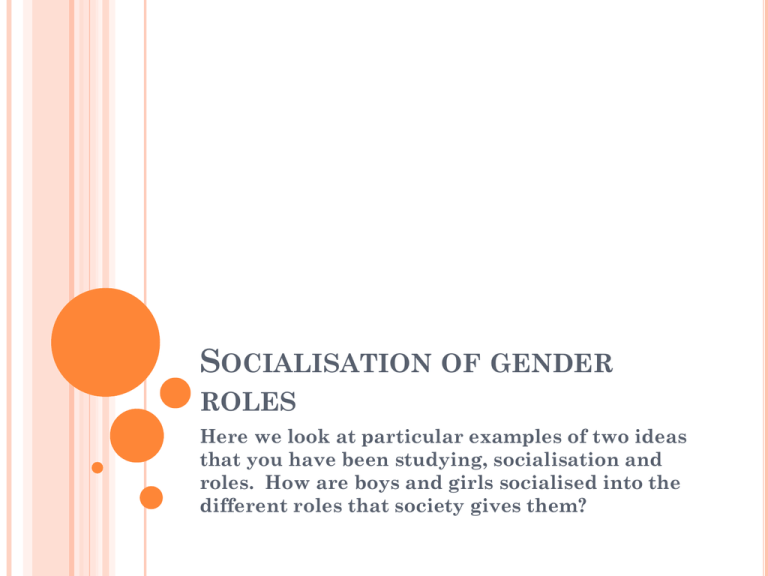
SOCIALISATION OF GENDER
ROLES
Here we look at particular examples of two ideas
that you have been studying, socialisation and
roles. How are boys and girls socialised into the
different roles that society gives them?
GENDER
The first thing we normally ask about about a
new baby is “Is it a boy or a girl?”
This shows how important gender is to us and
society.
It is possible to predict the future about certain
things according to gender. Example – Girls live
several years longer than boys.
The social role of someone’s sex is referred to as
their gender.
GENDER ROLES
Gender is very important for a person’s identity
Gender is shaped by the biological differences
between men and women but there are important
differences that come from particular societies.
Gender roles are different between place and
time.
100 years ago people accepted that women should
look after the home and not work.
This has dramatically changed. Women can now
have important careers and high qualifications.
We now see this to be a good thing.
THE FAMILY AND PRIMARY SOCIALISATION
People treat boys and girls differently.
Feminist Anne Oakley suggests that there are 4
ways in which gender socialisation takes place in
the first years of a child.
Manipulation
Canalisation
Verbal Appellations
Different activities.
MANIPULATON
Parents encourage behaviour that is normal for a
child’s sex. (Praise)
Parents discourage different behaviour.
(disapproval/punishment)
Which of these typically belongs to which gender?
Climbing trees
Wanting to look like a prince/princess
Playing with bugs
Playing with make up
CANALISATION
Children are ‘channelled’ to certain toys and
activities by their parents.
Which of these are boy’s toys? Which are girl’s
toys? Why?
VERBAL APPELLATIONS
The way we talk to children can show how
important gender is.
We use gender in our praise
Good girl
Naughty boy
DIFFERENT ACTIVITIES
Children are encouraged to do different things.
Girls are expected to help their mother.
Boys are given more freedom outdoors.
Parents may be aware of these differences and
try to raise children in non sexist ways.
This is very difficult
Children get information about their gender from
other agencies of socialisation.
What are the agencies of secondary socialisation?
Education
Mass Media
Religion
Peer groups
EDUCATION
Although boys and girls study the same thing,
they learn to behave differently.
Teachers treat boys and girls differently
Text books help to re enforce the difference.
Example
Older science text books show pictures of boys doing
experiments. Children think that science is a ‘boy’ subject,
therefore there are less girls studying science at A level.
Do you agree with this?
MASS MEDIA
TV, films, magazines, books and music all
influence gender roles.
Even though many try to avoid stereotypes, there
are often strong differences.
Boys are often active and heroes of adventure
Girls are often shown to be less active and
needing boys to help them/save them.
RELIGION
Religion can lay out very different roles for men
and women.
Particularly Islam and Christianity.
The Prophets and Holy people are nearly always
men.
God is nearly always a man
This gives the idea that men are more important.
PEER GROUPS
Friends are important with how we act and see
ourselves.
Friends can tell you what is appropriate for your
gender.
Those who do not fit into their gender role may
get called names and bullied.
This is more true for boys than girls.
Girls are allowed to be ‘tomboys’ but boys who
are feminine face scorn.
QUESTIONS
What are stereotypes? Explain by referring to
gender roles.
What does Oakley mean by canalisation?
Explain using an example.
Identify and explain two other ways in which
gender socialisation takes place in the early
years.
Choose one agency of secondary socialisation
and explain how it creates or re-enforces gender
differences.
Which agency of secondary socialisation is
the most important for gender differences? Give
reasons for your answer.




